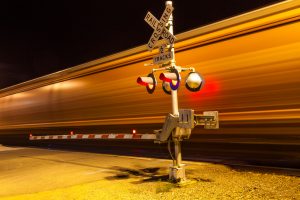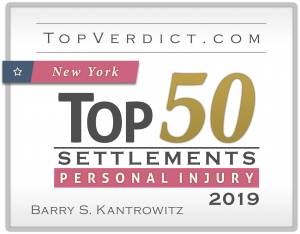 In the United States, there are more than 2,000 train accidents a year. In 2016, these led to more than 260 deaths and nearly 800 other injuries. It takes a tremendous amount of force to move a train along its rails and when something goes wrong, that force becomes a power of destruction.
In the United States, there are more than 2,000 train accidents a year. In 2016, these led to more than 260 deaths and nearly 800 other injuries. It takes a tremendous amount of force to move a train along its rails and when something goes wrong, that force becomes a power of destruction.
For victims of train accidents, the law provides recourse. Train accident victims may be entitled to compensation for both economic damages – like medical bills and lost wages – and non-economic damages – like pain and suffering and emotional distress. The path is often complicated, however, and partnering with an experienced train accident lawyer from Kantrowitz, Goldhamer & Graifman can be a crucial way to help your case.
Types of train accidents
By far, the leading type of train crash is derailments. Recent reports attribute 94% of all train crashes to derailments. However, these are not necessarily the leading cause of personal injury, because the majority involve cargo trains in rural areas.
In more populated areas, causes of train accidents include:
- Collisions with other vehicles or trains
- Mechanical failure
- Striking an object on the tracks
- Conductor error
In each of these scenarios, the accident may be caused by human error, outside factors, or a mix of causes.
A key piece of evidence that helps authorities determine the cause is a mandatory “black box” that records information like speed, direction, and braking pattern, and what measures the conductor took to prevent the accident. Train accident lawyers work to obtain official documentation such as black box information, interviews, and eyewitness reports to determine who may be at fault.
Who is liable for a train collision?
At first glance, it is usually not obvious who may be liable for train accident injuries. Personal injury claims typically require a showing that the defendant breached a duty of care that it owed the plaintiff, proximately causing the injury. All owners and operators are under a duty to act reasonably (not negligently) in their actions. When it comes to passenger trains, the railroad companies are under additional duties because they are considered common carriers. This includes:
- The duty to enforce safety rules
- The duty to inspect equipment
- The duty to train employees
In some cases, the transportation company may be liable if it was negligent and its negligence caused the accident. Just a few examples of other potentially liable parties include:
- A company that performed train or rail maintenance negligently
- An third party who drove or placed an obstruction on the track
- An employee who acted intentionally
The question of liability can be complicated, involving the intersection of state laws and federal regulations. This is an area where a train accident lawyer is especially valuable.
How a train accident lawyer can help
Proving liability in a train crash requires interpreting state and federal regulations and how they impact the specific facts of the case. It involves pinpointing evidence in official reports and obtaining relevant and case-building testimony. It also requires the ability to repackage all of the technical evidence in a narrative that a judge and jury can understand and relate to.
The personal injury lawyers at Kantrowitz, Goldhamer & Graifman have represented train accident victims in New York and New Jersey and are skilled at building a strong case. We hold transportation authorities responsible for the physical and mental suffering that their actions cause.
Notable recent train accidents
Passenger train is not the most popular form of modern transportation but the combination of high speeds, heavy equipment, and a dense concentration of passengers is a formula for potential disaster. Some notable recent train accidents include:
- On September 29, 2016, a New Jersey Transit train crashed during rush hour at a Hoboken station, killing one woman and injuring more than 100 other people. The New Jersey Transit had been under a Federal Railroad Administration audit since June 2016 due to increasing safety violations and federal citations.
- On May 12, 2015, eight people were killed and more than 200 injured when an Amtrak train headed to New York derailed in Philadelphia. Investigation into the cause focused on the train’s excessive speed; it was heading into a curve at 102 mph, more than twice the 50 mph speed limit.
Speak with a train accident attorney in New York and New Jersey
Kantrowitz, Goldhamer & Graifman is committed to fighting for the rights of accident victims in Rockland County, NY, Bergen County, New Jersey and throughout the Tri-State area. We rely on our decades of litigation experience to see your case through to the finish and ensure you receive adequate compensation.
Call us today for a free case evaluation.
Additional Train Accident Lawsuit Resources:
- Kantrowitz, Goldhamer & Graifman, P.C., KGG Law Investigates Hoboken Train Crash, https://www.kgglaw.com/personal-injury/hoboken-train-crash.shtml
- Kantrowitz, Goldhamer & Graifman, P.C., Our Injury Attorneys Are Representing Several Metro North Train Derailment Victims, https://www.kgglaw.com/personal-injury/our-injury-attorneys-are-representing-metro-north-train-derailment-victims/
- National Transportation Safety Board, Railroad Accident Reports, https://www.ntsb.gov/investigations/AccidentReports/Pages/railroad.aspx
- Federal Railroad Administration, FRA Investigations of Railroad Accidents, https://www.fra.dot.gov/Page/P0474






